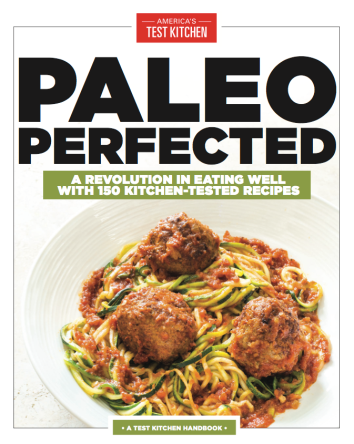Given the restrictions this diet presents, people serious about following it need to rethink not only how they shop and stock their pantry but also how they cook. Many fundamental ingredients that we depend on when cooking are off-limits, and you must make homemade versions of other key ingredients since the commercial versions are highly processed or contain stabilizers and gums (think mayonnaise, broths, and canned tomatoes). Before you even get started, take a look at the chart below, which we developed to make paleo cooking less intimidating to those who may not be familiar with it yet. We’ve provided some of the test kitchen’s favorite alternatives for some nonpaleo ingredients that are normally crucial to most recipes. Although these substitutes won’t work in every recipe—nor are they simply one-for-one swaps—this chart will help you start to understand how to approach paleo cooking.
| Instead of This | Use This | Why? |
| Vegetable oil | Coconut oil or extra-virgin olive oil | Instead of reaching for highly processed vegetable oil, we often use coconut oil or ghee, both of which perform well at high temperatures. The coconut flavor in our preferred coconut oil is too faint to detect in most dishes. Extra-virgin olive oil also works well for cooking, but save the expensive, high-end versions for raw applications. |
| Butter | Ghee | Because ghee, which is made by straining the milk solids from melted butter, is dairy-free, it’s widely considered to be paleo-friendly. (See our recipe for ghee.) Although ghee won’t work in all recipes, it is fairly high-heat-stable, so it performs well in applications like sautéing or pan-frying. |
| Milk, cream, and yogurt | Whipped cashews, coconut or almond yogurt | Soaked and pureed cashews make a surprisingly good substitute for dairy in creamy fillings and panades (paste made from bread and milk used to keep ground meat tender and moist). Nut-based yogurts also make a great stand-in for dairy-based yogurt in parfaits and creamy sauces. |
| All-purpose flour | Nut flours | Since no single nut-based flour can perform the same functions as all-purpose flour, we use a combination of almond flour and coconut flour, along with arrowroot flour, to give baked goods structure. |
| Cornstarch | Arrowroot flour or tapioca flour | We found that arrowroot flour works well to thicken sauces and gravies and helps to lighten the texture of baked goods. Tapioca flour works well in coatings, such as velveting chicken for stir-fries. |
| Sugar | Honey, maple syrup, coconut sugar, maple sugar, dried or fresh fruit | Sugar—even raw sugar—is a highly processed food. instead, we use natural sweeteners, like honey, maple syrup, maple sugar, coconut sugar, and fruit. Each of these sweeteners has different characteristics (like flavor and moisture content); we chose which one to use based on the specific recipe. |
| Store-bought broths | Homemade broths or water | Most store-bought broths contain additives, preservatives, and sugar—and those that don’t can be hard to find. Homemade broths (we provide recipes in the book’s first chapter) have a depth and intensity that store-bought broths lack, and even a small amount can provide a boost of savory flavor to many recipes. When possible, we make a broth within the body of a recipe to help keep things streamlined. That means using bone-in cuts or adding marrow-rich bones to recipes like beef stew. In recipes that already have a lot of flavor but need a small amount of liquid, water does the trick. |
| Canned tomatoes | Fresh tomatoes and/or tomato paste | Most brands of canned tomatoes contain preservatives and some even contain added sugar. We use fresh tomatoes wherever possible, processing them to approximate canned diced tomatoes. When appropriate, we also boost tomato flavor with tomato paste, which is simply tomato puree that is cooked to remove moisture. |
| Rice and potatoes | Cauliflower or celery root | We use cauliflower to make “rice” by processing the raw florets into rice-size pieces. Hardy root vegetables like celery root, rutabaga, or parsnips, which hold their shape nicely when cooked, work well in place of potatoes. |
| Soy sauce | Coconut aminos and fish sauce | To replace soy sauce, we use two ingredients to create a similarly salty, savory flavor profile: coconut aminos, which looks like soy sauce but has a slightly sweeter, less intense flavor, and fish sauce, which helps deepen savory flavor but doesn’t taste fishy when used in small quantities. |
